Installation and maintenance - not only in our workshop, but it's better 😉
A parking heater in the camper is not only in winter a warm companion, but also provides for cold, damp summer nights in the mountains pleasant comfort and pleasant indoor climate. But what to do if the camper has no auxiliary heating and how do you heat properly?
content of this article
The air heater: how does the classic work?
Of the Installation of a diesel parking heater is one of the most common heating variants for small campers and is ideally suited for retrofitting in mobile homes. The best-known branded products here are the Webasto Air Top, the Air 2D and 4D by Autoterm (formerly Planar) and the Airtronic from Eberspaecher.
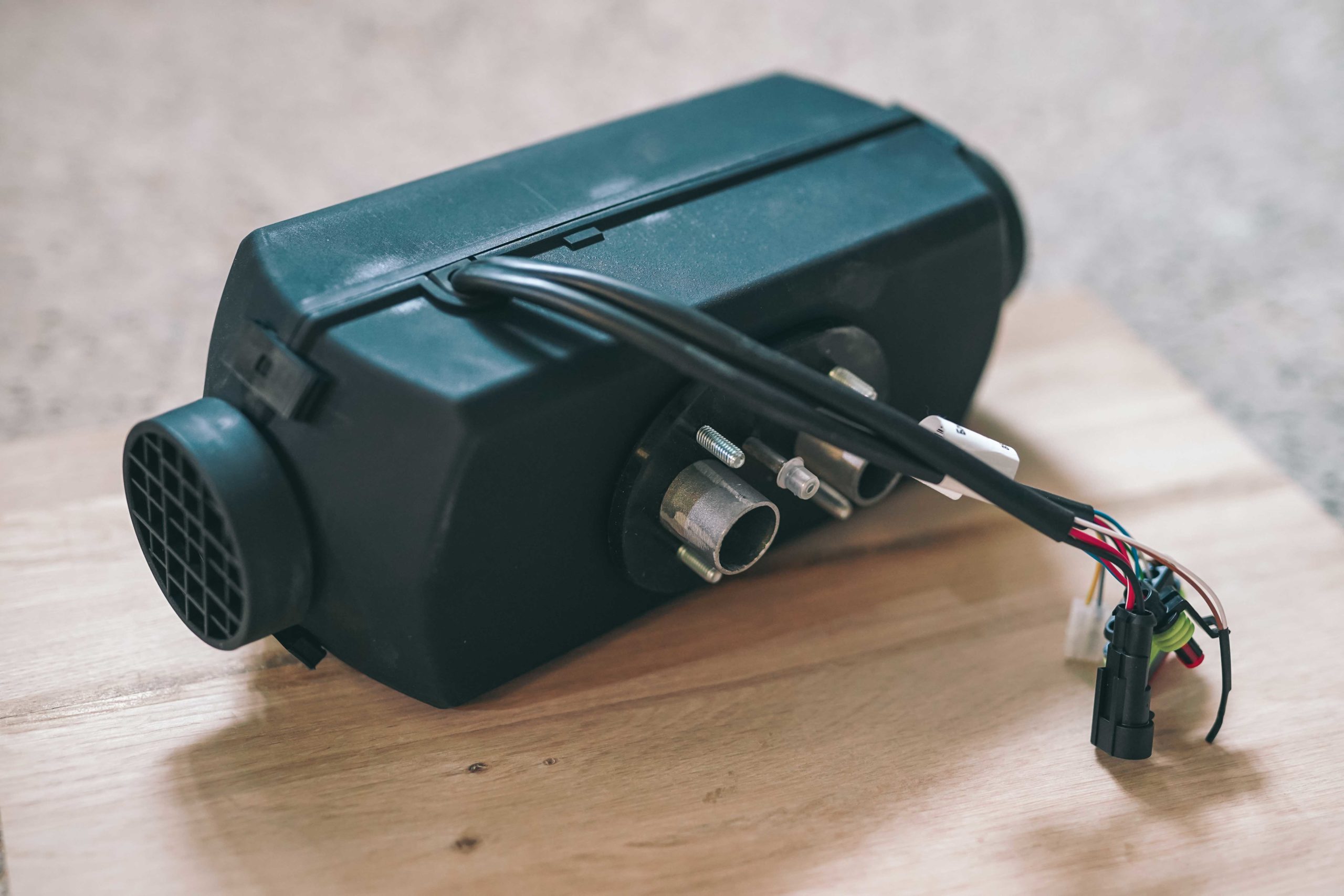
Basically, the diesel parking heaters are easy to use and effective in heating, while they consume little electricity and manageable amounts of fuel. Some parking heater kits are delivered with a separate diesel tank, which is rarely installed. Instead, for example a tank withdrawal drilled into the existing vehicle tank to have a fuel pump to transport the diesel from the tank to the heater. In the combustion chamber, fuel and oxygen from the air combine to form a fuel-air mixture. The glow plug in the Combustion chamber is electrically heated and ignites the mixture, with the resulting heat heating a heat exchanger. Combustion gases are removed from the vehicle via an exhaust pipe while a fan blows air from the interior (important!) over the heat exchanger.
The parking heater warms up very quickly and can also at the same time without heating function for air circulation be used in the camper. Since the air is sucked in from the interior, it is "only" circulating air, but it still helps if you Moisture or accumulated heat from the camper wants to get.
Is heating with diesel or petrol safe?
If a diesel parking heater according to the manufacturer's specifications installed by a competent person has been is the security given. However, not everything that glitters is gold. Sometimes you see with ominous providers that, for example, the air is sucked in from the outside, which still doesn't make sense to me. The danger here is that if you are unlucky, you will not suck in fresh air, but the Exhaust fumes from the auxiliary heater - included carbon monoxide. The wind just has to be wrong. In addition, the auxiliary heating would have to permanently heat up cold air, which Air recirculation function is the only correct installation method power.
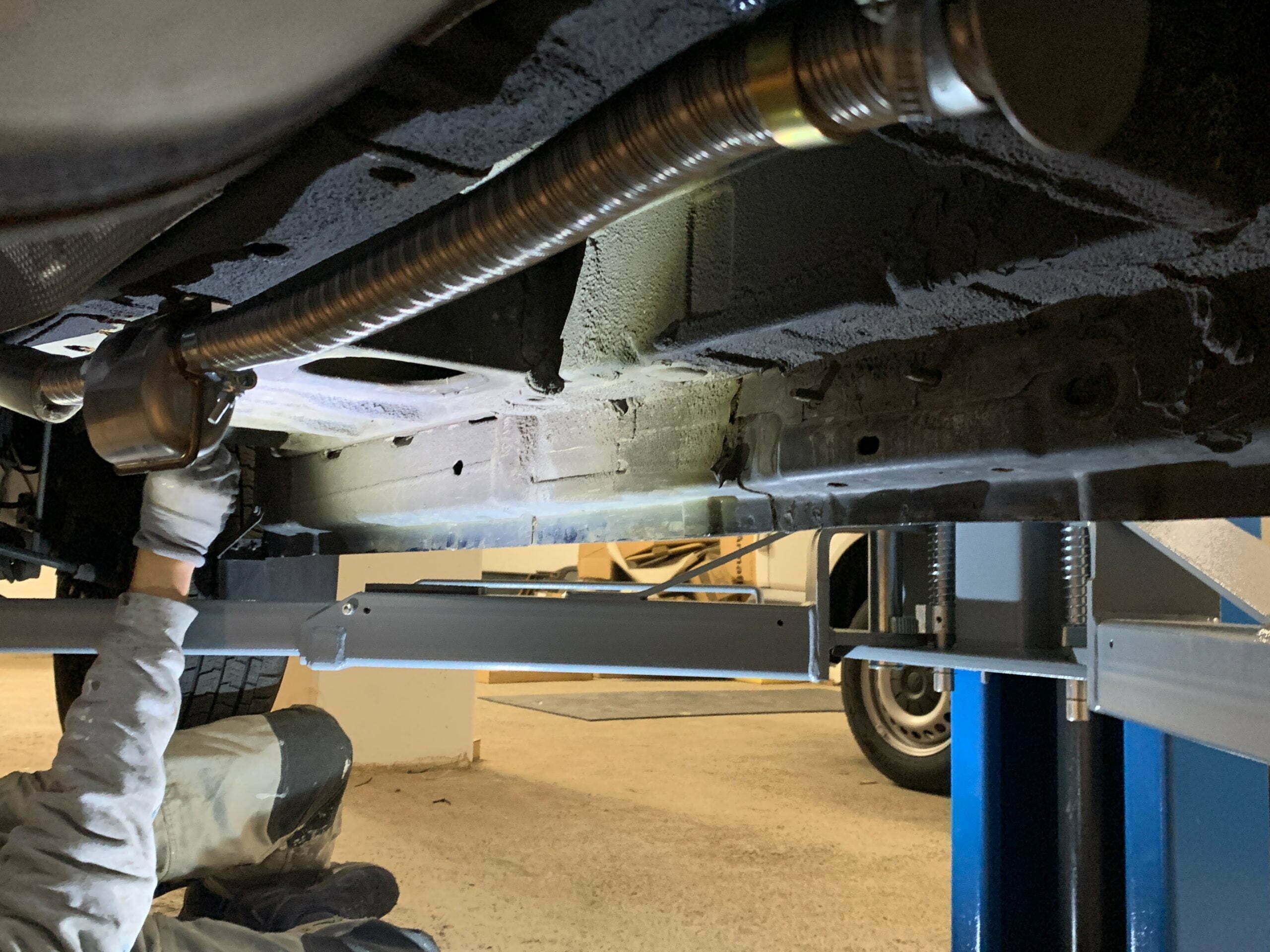
When installing or retrofitting an auxiliary heater, the position of installation not irrelevant in the camper. The exhaust pipe mounted under the floor can get hotter than 300 °C and should be cleaned accordingly heat protection be led. the Warm air distribution in the interior must be designed for up to +125 °C, so no temperature-sensitive things should be installed or stored directly at the air outlet of the heater. Crocs, for example, like to go down two sizes after a night in front of the heater!
One obligation to present Incidentally, there is not for the auxiliary air heating, provided that the heating CE/E2 certified is.
Auxiliary heating with 2kW or rather 4kW, maybe 2x2kW?
There is for sure no "best" heating for the camper, since the right choice is primarily based on the needs of the camper.
The air heater is included with Autoterm, for example up to 8 kW heat output, with the 2 kW and 4 kW variants being the most common. Which is now the right one for the camper depends a) travel behavior and b) the volume of the room away. Is the living space smaller than let's say 20 cubic meters (e.g. 2 m high, 2 m wide and 5 m long), the 2 kW heater is the right choice. However, if you want to hunt the Northern Lights in Norway at -40 °C, you can do it with the "small" heater not to the Finnish sauna create in the camper. However, this does not mean that the 4 kW is always the right choice. Diesel heaters don't work much differently than diesel engines. And they don't like to heat for short distances or at the lowest power level. Leading in the long term to coking. rather one smaller heating in full throttle run as one large heating on low flame.

In larger motorhomes, it sometimes makes sense to install two heaters. On the one hand, you save yourself one complicated warm air distribution from a single heater and on the other hand you can also combine a water heater, for example. who up expedition drives to remote places, which of course has one if there are two heaters redundant heating system.

Diesel consumption and power consumption of a parking heater
The auxiliary air heater needs fuel on the one hand and electricity on the other. But don't worry, the parking heater will fill the tank do not pump empty, no matter how strong and how long it is heated. When installed correctly, the tank outlet is higher than the tank bottom, so that you sufficient reserves should have to get to the nearest gas station. Electricity in the parking heater is mainly used for the fan, but also during the preheating of the combustion chamber and for first igniting the injected fuel and air mixture. As soon as the combustion chamber is up to temperature, the glow plug pulls no electricity either. The auxiliary heaters are available in both 12 V and 24 V versions.
With the best-known air heaters, you can use the following values as a guide when it comes to consumption. The technical data have a tolerance of +- 10 % at an ambient temperature of +20 °C.
*In the start-up phase, the power consumption can be up to three times as high as the specified maximum value.
Off to the cold mountains with Höhenkit and Co.
Actually, every decent parking heater set comes with a so-called altitude kit sold. But why do you need the high-altitude kit? That's no frills, it's just a matter of course some physical laws perish.
Of the air pressure in the atmosphere decreases non-linearly with increasing altitude above sea level. At an altitude of approx. 5,000 m, it is only half as large and is halved again at 10,000 m. At sea level it is Oxygen partial pressure around 21 % of the atmospheric pressure – in other words, our air contains 21 % of the oxygen required for combustion in the parking heater. The parking heater, like every engine, needs a tuned one combustion air ratio, also known as lambda. If the mixture is too lean, performance drops. If the mixture is too rich, the decreases Performance with high fuel consumption sometime too. Diesel engines run for soot-free and complete combustion with excess air with Lamba of over 1.2 (over 17.5 parts diesel to 1 part air). If the oxygen partial pressure decreases with increasing altitude, the mixture would become increasingly rich without adapting the injected fuel quantity. This increases consumption and exhaust emissions and can in the long term to fouling of the heating to lead.
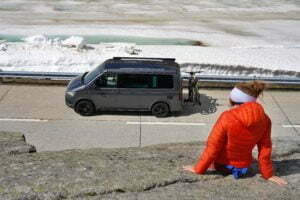
The Altitude Kit is nothing more than a air pressure sensor, which cyclically measures the atmospheric air pressure and informs the parking heater about the current situation. If you are standing with the camper at the Furka Pass, the auxiliary heating is automatically switched on reduce the amount of fuel injected. Of course, the heating output also drops by around 1 % per 100 meters of altitude, from about 1500 meters above sea level.
Proper heating with the parking heater in the camper
Heating in the camper is not very different from heating at home. It's about getting the room warm and maybe even reducing the humidity.
- Continuous heating: The heater has a comparatively high starting current. Constantly switching the heating on and off leads to high power consumption. The heating also doesn't like it if you only let it run for a short time, as it never really gets up to temperature. The best way to compare that would be with a lot of short trips in a diesel car. That's why it's better to leave the heating running all the time, even when the window is open for a short time.
- Let fresh air in: Regular airing was not only important during the pandemic, but also gets the moisture out of the camper. The heater dries the air over time, but because the auxiliary heater only circulates air, it doesn't go fast enough when cooking, for example. The warm air can absorb a lot of moisture and is transported out of the vehicle by forced ventilation.
- It's better to sleep cool: the parking heater is not silent and, above all, when the entire periphery has warmed up after a long period of heating, it can get a little too warm at night. Therefore, it can be comfortable to sleep without a parking heater. On the one hand it is quieter and you sleep better at lower temperatures, on the other hand you save fuel.
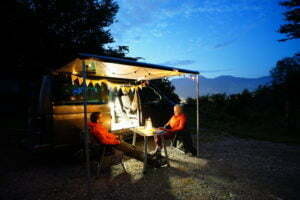
Installation of a parking heater by a professional: cheap or chilled?
as certified installation partner of Autoterm (from 2022 with production site in Riga, Lithuania) we naturally build such parking heaters in our factory in every kind of camper and also boats a. Depending on the basic configuration and design of the mobile home, the first step is to decide on the right installation location for the heating: in the vehicle or under the floor. Both can be done cheaply or chilled out, depending on the vehicle equipment, vehicle type and the desired warm air flow.
Here the heater mounted under the body floor. This has the advantage that you save space in the vehicle and in the case of VW T5/T6 also with one OEM warm air duct can work. For all other models that have no factory preparation for the installation of a heater, the underfloor installation is complex and suboptimal. Since the air ducts (intake and warm air) from the heater mounted under the vehicle have to get into the car somehow, two large holes with a diameter of 75 to 90 mm are required in the body floor. In addition, you have to open the underfloor installation Protection against moisture and dirt be respected - by the way, underfloor makes no sense for off-road vehicles.
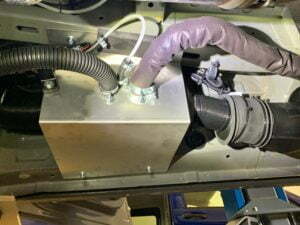
The easiest way is the parking heater, for example under the driver's seat to be installed without a large warm-air duct. For this you take a mounting flange to the Combustion air intake from the outside and route the exhaust pipe to the outside. The air for heating is then sucked in from the driver's compartment, for example, and released back into the living room after it has been heated. However, there are many other ways of placing a parking heater in the vehicle and using warm air distribution with multiple outlets to distribute the heat evenly in the vehicle. It should be noted here that the auxiliary heating directly to the board battery is glued on and a fuel line has to be laid to the tank so that the distances are kept as short as possible.
 man
man
- The heater belongs mounted to the floor, ideally with a suitable installation flange for the air/flue gas lines. Absurd constructions and assembly anywhere other than directly on the ground harbor a certain potential for danger. A broken line or Leak in the exhaust line have a corresponding effect on health and in the worst case, you only make this mistake once. Ie: Short flue gas duct and flue gas duct and Combustion air routing only outside the vehicle.
- Draw in heating air from outside, because you would like to have "fresh air" in the camper...is also not a good idea, but rather a very, very bad one with a high risk potential. Because depending on how the wind is, you would at the External intake no fresh air, but pull the exhaust gases from the auxiliary heater back into the vehicle.
- Hard 90° angles in the distribution of warm air not only reduce the efficiency of the heating system, but can also heat accumulation also cause the heating to switch off. Therefore, at first glance, "good" installation locations are no longer so good when the warm air flow is included in the planning.
- If you keep hearing a mechanical click when heating up with your new parking heater...then someone forgot it to bleed the fuel pump. It's not bad, but can be annoying.
- The fuel is either from the vehicle tank via tank extraction pipe routed to the auxiliary heater or, if there is an auxiliary heater, can also be routed via a tee be tapped from its tank extraction. A T-piece on the supply (fuel line to the engine) or return is less recommended, especially in modern vehicles, as it is here due to Pressure influence in the fuel circuit error messages can occur. In all cases, it must be ensured that neither fuel can leak out after assembly nor that the heater can be flooded with diesel due to incorrect assembly.
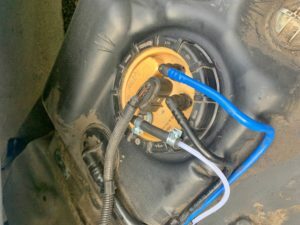
In addition to the well-known brand manufacturers can be found There are also cheaper options online. Also sometimes called China crackers. The amount of work required for installation is sometimes greater than with an Autoterm, for example. The installation instructions and Service is simply non-existent. Such a parking heater has rarely heard of an error memory, if you even managed to decode the control panel. One could perhaps live with these less material "differences", but there are certain components serious drawbacks. The ones supplied are not always fuel lines indeed resistant to fuel. In addition, many features are copied, but sometimes worse and sometimes worse, such as the tank extraction. Therefore, anyone who is flirting with an Asian auxiliary heater should not include the scope of delivery check very carefully and possibly replace individual parts. In principle, however, we advise against these products, because in the end you don't really get much Saves money but hassles shopping can.
Conclusion on installing a parking heater
The installation of the auxiliary heating is with corresponding experience and the right tools doable in one day and ensures a long-term cozy and warm camping experience. The heaters are also usually maintenance-free. Should there be a problem during use, we will also be at a disadvantage the 3 year old installation guarantee available and can not only read out the error memory of the heater, but usually also solve an existing problem directly on site.
more comments

Pasta every day keeps… – Sicily with the #2 camper
Pasta every day keeps... - Sicily with the camper #2 THE DOCTOR AWAY...When I think of Sicily, what comes to mind is

Without campers, but lava - Camping Sicily #3
Without a camper, but lava - Camping Sicily #3 The Sicilian weather is not always on its best side. Therefore